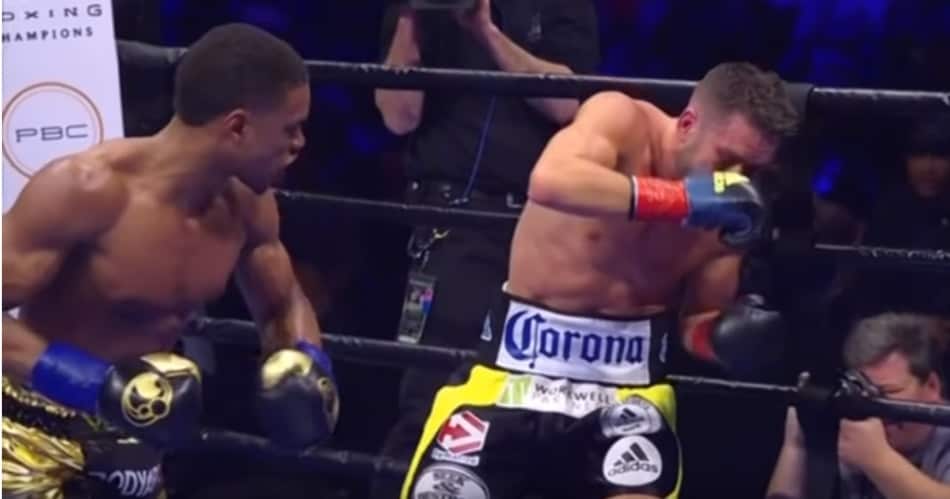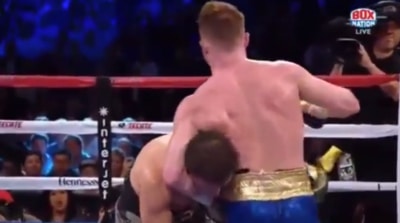
While watching boxing, I have always been curious to know how many matches end with the knockout criterion. Is it possible to determine the total percentage of such matches? I started to dig this answer online and found that:
Around 66% of matches get an outcome through knockouts (KO). But a big portion of those knockouts is technical knockouts (TKO). Knockouts (KOs) happen most often in the heavyweight division.
Here’s the percentage of KOs and TKOs for each weight class:
| Weight Class | KOs | Knockout Percentage |
|---|---|---|
| Heavyweight | 212 | 79% |
| Cruiserweight | 180 | 71% |
| Light Heavyweight | 170 | 67% |
| Super Middleweight | 225 | 70% |
| Middleweight | 185 | 75% |
| Junior Middleweight | 156 | 65% |
| Welterweight | 200 | 68% |
| Junior Welterweight | 171 | 69% |
| Lightweight | 177 | 67% |
| Junior Lightweight | 154 | 66% |
| Featherweight | 146 | 58% |
| Junior featherweight | 127 | 58% |
| Bantamweight | 141 | 64% |
| Junior bantamweight | 246 | 68% |
| Flyweight | 160 | 70% |
| Junior Flyweight | 123 | 63% |
| Strawweight | 111 | 51% |
(data from top 10 boxers according to ringtv.com)
Proper KOs are uncommon, most of the knockouts in statistics are actually TKOs. Real KOs most often happen in heavier weight classes because heavier boxers have more power.
On the contrary, in lower weight classes there are fewer KOs. In the strawweight division for example the KO percentage is just 51% (including TKOs) as you can see in the table above.
In amateur boxing KOs and even TKOs are very uncommon. That’s because amateur boxing bouts are only 3 rounds long and most boxers focus on out-pointing their opponents rather than knocking them out. Only boxers with great power and aggressive style such as Mike Tyson have a high KO percentage in amateur bouts.
Difference between KO and TKO
During a knockout, one of the boxers delivers a blow to his opponent, after which the opponent fails to rise and fight back within a given time limit. Generally, the opponent fails to do so because of dizziness, concussions, and unconsciousness that the blow causes. In most situations, we see the same consequences of a knockout, unless an injury is caused.
The time limit for reviving oneself and get back on the feet is ten seconds. If the boxer fails to do so, he is knocked out and the referee signals the same.
On the other hand, a technical knockout occurs when the referee decides that the boxer is not in the condition of carrying the fight ahead. Usually, it happens when a boxer takes a lot of punishment without throwing anything back at his opponent.
TKOs also happens when a boxer is unable to recover from an injury sustained while fighting. The referee and the doctor check the condition of the fighter by seeing if he is alert and in a position of defending himself.
Types of Knockouts
Apart from a punch in the head, a boxer can be knocked out by a body shot. That usually happens after a punch to the liver (on the right side of your torso). Liver punches can be devastating because they cause excruciating pain and can literally shut down your body.
When it comes to the other types of KOs (by blows to the head), they usually happen after a punch/punches to the chin or the temple. Landing a blow on your opponent’s chin or temple is the most effective way to knock him/her out. That’s because when you punch someone in those places that makes their brain bash into the skull which can result in a KO.
One Punch KO vs Multiple Punches KO
Boxers who can KO their opponent with one punch have great power. Wilder is a great example of such a boxer. Knocking someone out with multiple punches is easier once you hurt them but the referee may step up making it TKO.
Why there are more KOs in Streetfights than in Boxing?
If you like to watch streetfights on the internet like me you may have noticed that often people are getting knocked out with just one punch in a matter of a second. If untrained people manage to do that why boxers aren’t knocking each other out in the first few seconds of the fight considering that they unch much harder?
Well, boxers are trained not only to attack but also to defend from punches. Their eyes are trained to see punches from a mile away so they keep a distance and use blocks, parries, head movement or even clinching to avoid getting starched. That can’t be said for most untrained people who often don’t see the punches coming which results in a knockout.
In boxing, you can’t just go out there and punch your opponent in the face, he will most likely defend your punch and throw some back. That’s why boxers need to trick their opponents in order to land a knockout blow. They do that by setting up their shots using fakes, feints, or counter punches. But this is not easy on the highest level of the sport and that’s why KOs don’t happen in every fight.
What are other possible outcomes of a boxing match?
Apart from TKO and KO, boxers can also win on points, due to doctor stoppage, corner forfeit, or disqualification.
A match can also end in a draw in several ways. The judges can show similar scores to both the boxers for all the rounds; two of the three judges showing similar scores; the match not reaching a conclusion even after the usual limit of rounds played by both the boxers.
Moreover, a match can end in a draw with a double knockout as well. A double knockout happens when both the boxers deliver blows to each other, which leaves them in a condition where they can no longer fight.
Apart from this, a match can also be declared as a ‘no contest’ by the referee. If any one of the two boxers is unable to fight due to an accidental injury sustained earlier in the match, the referee can declare it as a ‘no contest.’
Boxers with the highest knockouts of all time
Throughout my research, I found that there are some great boxers who are the epitome of the sport. Their knockout percentages are very high when compared to others.
1. Billy Bird – 138 KOs
Billy Bird has the highest number of knockouts, 138, which also happens to be a world record. He had a dynamic boxing career, which spanned out in more than 350 professional fights.
Bird is considered to be one of the most successful British boxers of all time.
2. Archie Moore – 132 KOs
Archie Moore is another popular name in the list of boxers who have the highest number of knockouts. He falls second on the list, with 132 knockouts in a total of 220 matches.
He fought for more than 25 years, and his career is dotted with some remarkable victories that earned him the nickname “The Mongoose.”
3. William Lawrence Stribling Jr. – 129 KOs
Young Stribling was a tall boxer, and we saw earlier that tall boxers have an upper edge in fights.
He has the third-highest number of wins by knockouts on the list. Out of his 256 wins, he won 129 by knockouts. His career started from high school, where he would participate in fights.
He got into the limelight from the same and entered the professional boxing industry.
How Boxers Knockout their Opponents
Sometimes, the best time to knock your opponent out might be in the later stages. The reason behind that is fatigue. When your opponent is completely tired and barely surviving it’s much easier to knock him out. That’s why we see much more knockout in pro boxing compared to the short amateur bouts.
Boxers also knock each other out by reading each other. For example, if a boxer notices that his opponent is leaning to his right to avoid jabs, the next time he throws a jab he will follow it up with a right hand and aim it to the spot where his opponent likes to bring his head.
The opponent will not expect the punch and probably won’t see it coming which can result in knockout or knockdown.
Which Body Parts Boxers Target to Deliver a KO?
Besides the chin, the temple and the liver boxers also target:
1. Abdomen
The abdomen is an area that is central to the whole framework of the human body. A strong punch in the abdomen not only causes a lot of pain but also affects the body’s strength of staying upright.
A powerful shock wave created by your punch can bring the opponent down on the floor within seconds.
2. Ribs
While I have certainly watched this in several movies, a powerful can bruise or even break your opponent’s ribs.
That will disturb the core of your opponent, cause excruciating pain and end the fight.
How Boxers Train for Delivering KO Blows?
First of all, they focus on their accuracy. While practicing powerful punches, they aim at small pads or a specific spot on their heavy bag.
Power is obviously very important as well, and the best way to train for power is to punch a heavy bag as hard as you can with proper technique. However, power is influenced significantly by genetics and fighting styles.
Some boxers are born with great power for example Deontay Wilder which is probably the best KO artist of all time. Others don’t have that much power but have speed (fighters like Mohammed Ali for example).
Your style is also important when it comes to power. If you are an outside fighter who is light on his feet and uses a lot of jabs (like Tyson Fury) you most likely will have less power than some flat-footed boxers who really sit on his punches.
The timing of your punch is as important as the strength behind it. The best times to land a KO blow are right after your opponent missing when he moves his head or opens his guard. Improving your timing can be done in sparring or focus mitts.
Conclusion
We can conclude that knockouts are a treat for boxers, who are looking forward to winning a match in style. Although, for perfecting knockouts, you must train in the right way.
Proper training can improve your reflexes and make you better at knockouts.



